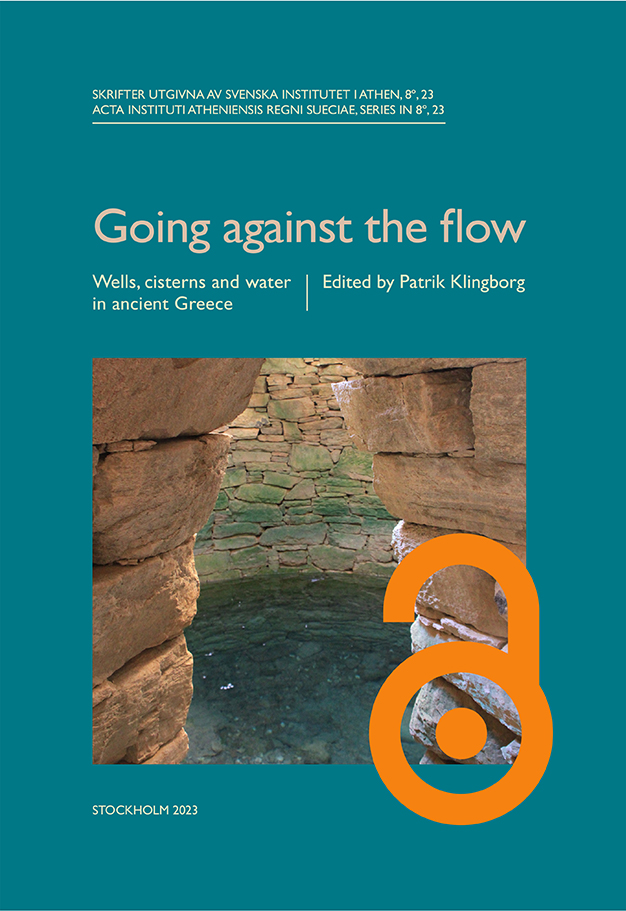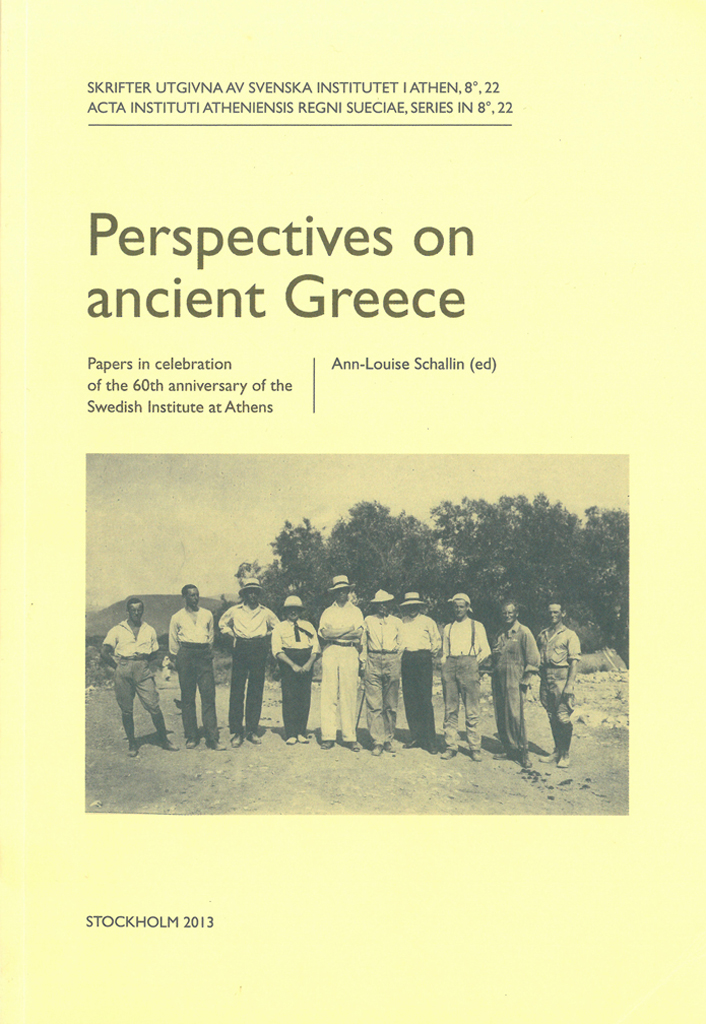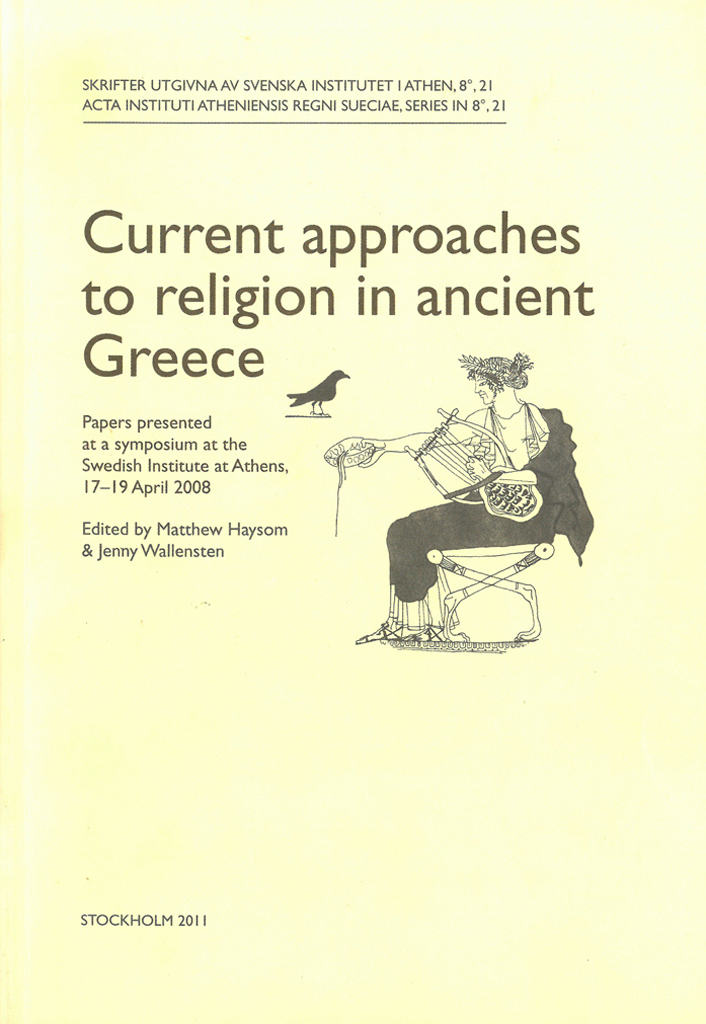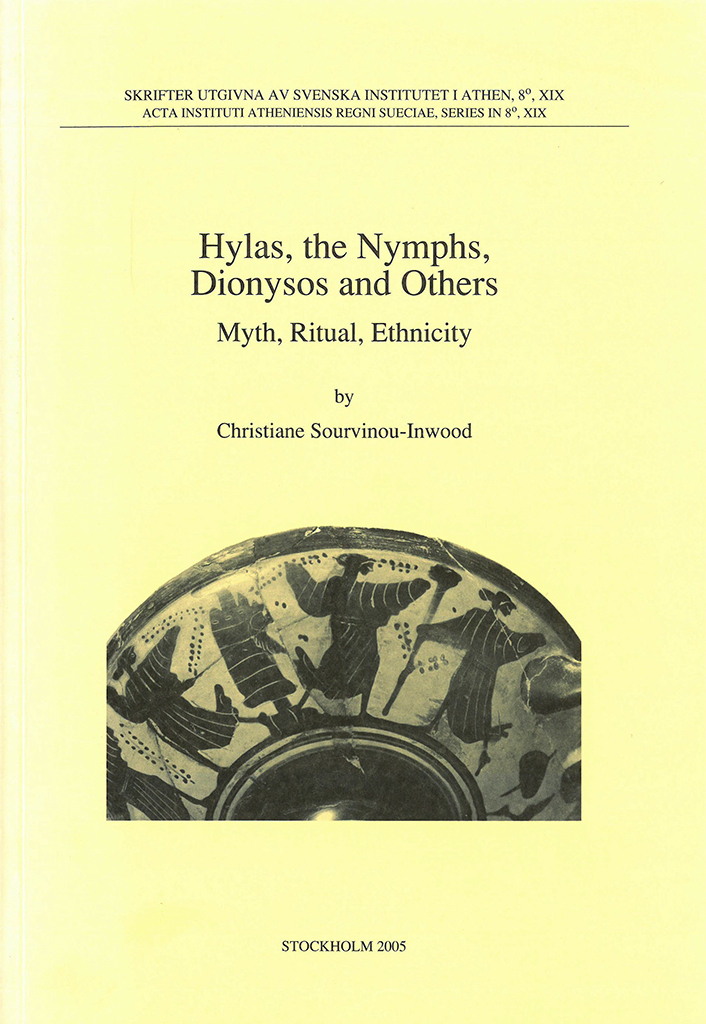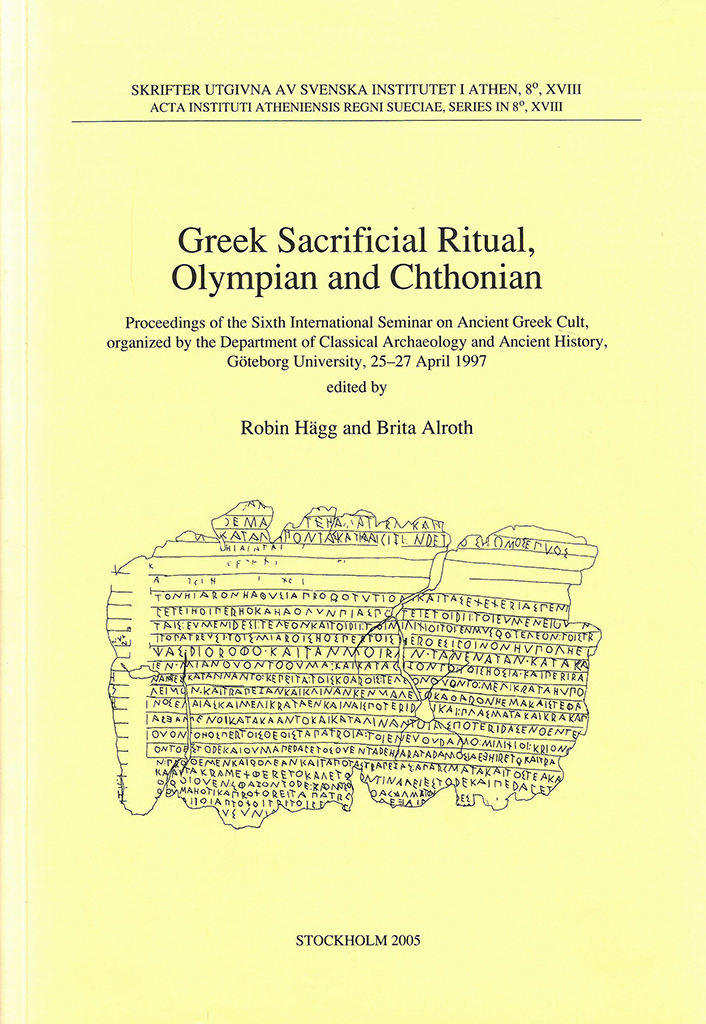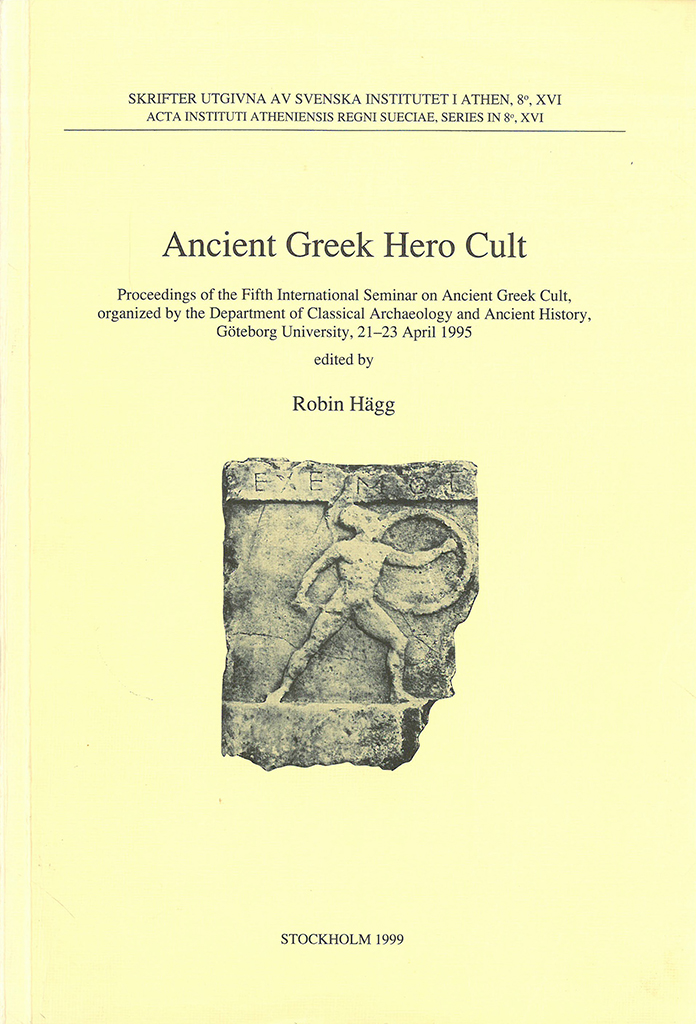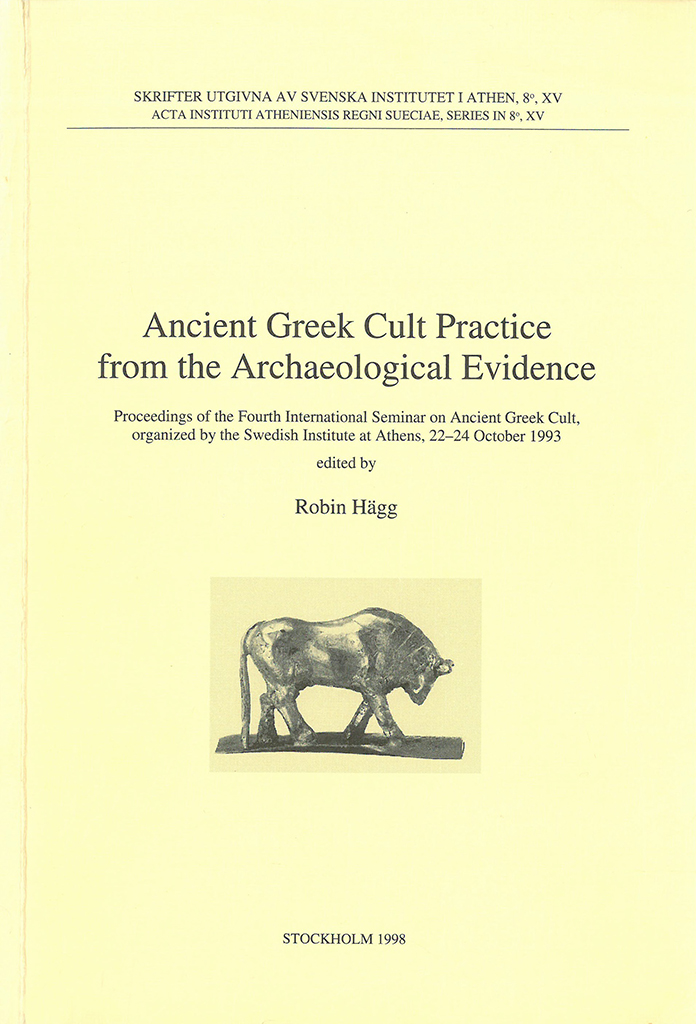Published by the Swedish Institute at Athens. Distributed by Eddy.se AB. All content available with open access, use links below. “The pen fell from my hand when I was in my eighty-sixth year.” Revisiting the work of Martin P. Nilsson Edited by Jenny Wallensten & Gunnel Ekroth https://doi.org/10.30549/actaath-8-24 2017 marked the 50th anniversary of both the death of Martin P. Nilsson, the eminent Swedish scholar of ancient Greek religion, and the publication of the third edition of his monumental Geschichte der griechischen Religion. Nilsson’s scholarly output was huge, with a production of around 20 items annually, and he touched upon most aspects of the study of ancient Greek religion, be it in a book or an article, in a footnote or an in-depth argument. This volume constitutes a re-reading of Nilsson in the light of new ancient evidence, and modern methods and theoretical approaches. Five leading researchers in this field of religion revisit major works of Nilsson’s oeuvre—Geschichte der griechischen Religion, vols 1 and 2 (Jon Mikalson and Eftychia Stavrianopoulou), Greek folk religion (Vinciane Pirenne-Delforge), Minoan-Mycenaean religion (Matthew Haysom) and Greek piety (Michael D. Konaris)—in order to explore whether his works today are mainly touched upon with just the usual…
Published by the Swedish Institute at Athens. Distributed by Eddy.se AB. All content available with open access, use links below. Going against the flow. Wells, cisterns and water in ancient Greece Edited by Patrik Klingborg https://doi.org/10.30549/actaath-8-23 Abstract Despite the prevalent picture of the water supply in the ancient world as being dominated by fountains and aqueducts, the large number of excavated wells and cisterns show that these were the primary water sources for most individuals. Yet, little research has been done on their construction, function and use. This prompted the organization of the workshop Going against the flow. Wells, cisterns and water in ancient Greece, held at the Swedish Institute at Athens on 28–29 September 2017, and subsequent publication of the contributions in this volume. The ten papers presented here offer new evidence as well as a wide range of new perspectives on the use and function of wells and cisterns in ancient Greece. Considering the ubiquity of these installations in every type of setting during antiquity, from pan-Hellenic sanctuaries and civic centres to domestic workshops and remote farmhouses, it is hoped that the breadth of interest among the authors will allow other scholars to advance their own work further,…
Published by the Swedish Institute at Athens. Distributed by Eddy.se AB. Perspectives on ancient Greece. Papers in celebration of the 60th anniversary of the Swedish Institute at Athens Edited by Ann-Louise Schallin Abstract This volume presents current research related to Greek prehistory and Classical Archaeology and thus serves as a crosssection of the research strategies, which the Swedish Institute at Athens promotes. The topics relate to research, which span from the Neolithic to the Hellenistic times. The reason for putting this publication together is twofold: one aim is to publish the papers, which were put forward by a select number of Swedish scholars who were invited to give lectures at the Swedish Institute at Athens during the celebrations commemorating the Institute’s 60th anniversary on 10 May 2008. The second aim is to honour professor emeritus Robin Hägg, who was the director at the Swedish Institute at Athens from 1976 to 1994. This book thus consists of articles based on the lectures, which were held at the Swedish Institute celebrations on May 10 2008 and also of a number of articles by scholars who wished to celebrate Robin Hägg and who thus joined the venture. Contents Acknowledgements Ann-Louise Schallin | Introduction…
Published by the Swedish Institute at Athens. Distributed by Eddy.se AB. Current approaches to religion in ancient Greece. Papers presented at a symposium at the Swedish Institute at Athens, 17–19 April 2008 Edited by Matthew Haysom & Jenny Wallensten Abstract In recent years Greek religion has emerged as one of the main topics for the study of ancient Greek society as a whole. This flourishing interest is certainly due to the recognition of the centrality of religion to Greek culture: religious beliefs and practices were connected to almost every aspect of the Greek world. This volume brings together fourteen contributions from a group of upcoming international scholars, presented at a conference held in the Swedish Institute at Athens and the British School at Athens in 2008. The papers take a wide range of approaches: archaeological, epigraphic, iconographical, philological and historical. They demonstrate the diversity of the subject, covering such issues as nineteenth-century historiography, cult epithets, the pantheon, regionalism, polis religion, the performance of ritual, the use of music in ritual, the accessibility of sacred space, and the visual aspects of dedications. The contributions bring new theoretical perspectives, seek to better understand ritual, and highlight the variety of Greek religion. Contents…
Published by the Swedish Institute at Athens. Distributed by Eddy.se AB. Encounters with Mycenaean figures and figurines. Papers presented at a seminar at the Swedish Institute at Athens, 27–29 April 2001 Edited by Ann-Louise Schallin & Petra Pakkanen Abstract This volume presents fourteen articles which discuss Mycenaean figurines from various points of view. They focus on different aspects of the figurines, elaborating on their function, contextual characteristics, production, use-life, classification, topography, and history of scholarship. The articles are based on papers given at a workshop at the Swedish Institute at Athens in April 2001 entitled ‘Cultic Space and Mycenaean Figurines’. The idea of having a workshop arose from the fact that several of the participants were involved at the time with the documentation of various figurine types from the so-called Potter’s Workshop at Mastos in the Berbati Valley in the Argolid. The number and variety of the Mycenaean figurines from Mastos is impressive, particularly as the excavation had covered only a small area. The excavator, Å. Åkerström, proposed that the site had a cultic function in addition to its role as a production centre. In order to better understand the characteristics and identity of Mastos, scholars were invited to discuss…
Published by the Swedish Institute at Athens. Distributed by Astrom Editions. Hylas, the Nymphs, Dionysos and others. Myth, ritual, ethnicity. Martin P. Nilsson Lecture on Greek Religion, delivered 1997 at the Swedish Institute at Athens By Christiane Sourvinou-Inwood Abstract The focus of this book is the reconstruction of the mythicoritual nexus of Hylas in Kios in Mysia through the in-depth investigation of the evidence (surviving in accounts by, and so shaped by the filters of, outsiders) and also of other issues implicated in its Problematik: ethnicity, cultural and religious interactions between Greeks and non Greeks, colonial discourses (with special emphasis on the foundation mythopoea of Kios’ mother city, Miletos), the nature and function of the Nymphs, the different personalities of Dionysos, advent festivals, certain problematic categories of cult recipients. Hylas’ myth and ritual had been constructed, I conclude, through complex interactions between several Greek mythicoritual schemata and included also elements that appear in non Greek nexuses located in the area of Kios. The myth was both a foundation myth constructing cultural continuity with the heroic age and an immortalization myth: a Greek youth was abducted by Nymphs and became a deity rooted in the landscape, symbolically rooting the colony to…
Published by the Swedish Institute at Athens. Distributed by Astrom Editions. Greek sacrificial ritual, Olympian and Chthonian. Proceedings of the Sixth International Seminar on Ancient Greek Cult, organized by the Department of Classical Archaeology and Ancient History, Göteborg University, 25–27 April 1997 Edited by Robin Hägg & Brita Alroth Abstract A collection of eighteen papers, read or circulated at an international seminar in Göteborg, that deal with the ancient Greek sacrificial ritual, with special reference to the traditional dichotomy between the Olympian and the chthonian aspect, the relevance of which has been questioned in modern research. Among the special topics discussed are sacrifices to heroes and in the cult of the dead, magical sacrifice, sacrifice to the sea, pig sacrifice and the sacrifice of pregnant animals. Other aspects dealt with include the role of dedications in the cult and the practicalities of ruler-cult, as well as the priest’s role in Greek sacrifice. Several contributions discuss the implications of the recently published lex sacra from Selinous for the understanding of Greek sacrificial practice, reinterpreting previously known inscriptions in the light of the new evidence. Two papers deal with descriptions of sacrifice in Greek tragedy (Aeschylus, Oresteia; Sophocles, Trachiniae). There is a…
Published by the Swedish Institute at Athens. Distributed by Astrom Editions. New research on old material from Asine and Berbati in celebration of the fiftieth anniversary of the Swedish Institute at Athens Edited by Berit Wells Abstract After an introductory paper on the creation of a Swedish Archaeological School at Athens, ten papers deal with subjects associated with material excavated at Asine and Berbati in the Argolid before the new wave of excavations in the 1970’s. The following subject matters are discussed in relation to Asine: the emergence of an élite in the Middle Helladic (MH) period; pre-firing marks on MH Aeginetan pottery; wooden boxes used as coffins for infants in MH times; MH child morbidity and child mortality; Asine as a case of economic interaction in the Argolid; the provenience and alloy compositions of metal objects diachronically; the source of iron during the Geometric period; bridging the gap in settlement between 700 and 300 BC. Two papers are concerned with Berbati: one underlines the continuity of the Mastos settlement from Early Helladic II into EH III; and one lays out the possibilities for a detailed study of the provenience of the local Mycenaean ceramics. Contents Preface (p. 7) Berit…
Published by the Swedish Institute at Athens. Distributed by Astrom Editions. Ancient Greek hero cult. Proceedings of the Fifth International Seminar on Ancient Greek Cult, organized by the Department of Classical Archaeology and Ancient History, Göteborg University, 21–23 April 1995 Edited by Robin Hägg Abstract A collection of twelve papers, read at an international seminar in Göteborg, that deal with various phenomena of the ancient Greek hero cult, based on literary, iconographical and archaeological evidence. Among the special topics discussed are the hero cults in Early Iron Age Greece, the relationship between funerary ritual, the veneration of ancestors and the cult of heros, the Danaides of Argos as “ancestors”, the multilocality of heroes, patriotic heroes, the politics of the transferal of the bones of heros, the position of the Dioskouroi as Laconian heroes worshipped also in Attica, the origins of Greek hero cult in the context of overseas foundations, the heroon of Asclepius in Athens, the sacrificial rituals of Greek hero cults in Pausanias, the hero Melikertes-Palaimon at Isthmia, and the development of hero cults in the Hellenistic and Roman periods. Contents Preface (p. 7) Alexander Mazarakis Ainian | Reflections on hero cults in Early Iron Age Greece (pp. 9–36)…
Published by the Swedish Institute at Athens. Distributed by Astrom Editions. Ancient Greek cult practice from the archaeological evidence. Proceedings of the Fourth International Seminar on Ancient Greek Cult, organized by the Swedish Institute at Athens, 22–24 October 1993 Edited by Robin Hägg Abstract A collection of thirteen papers, read at an international seminar in Athens, that deal with various phenomena of Greek cult practice, analyzing the information gained from the archaeological evidence. Among the special topics discussed are cult practice in the acropolis sanctuary of Minoa on Amorgos, the sanctuaries in the Artemision of Ephesos, the role played by osteological analysis in the understanding of Greek sacrificial practice, the interpretation of animal bones and fire traces connected with ritual feasting in the Herakleion on Thasos, ritual and society in Early Iron Age Corinthia, small dedications from the Archaic temple of Poseidon at Isthmia, altars in Greek hero cults, the early history of the sanctuary of Demeter and Kore at Eleusis, a sacrificial area near the sanctuary of Apollo Daphnephoros at Eretria, terracotta plaques and other finds from the sanctuary of Demeter and the Dioscouri at Messene, the interpretation of sickles in Greek sanctuaries, changes in votive practice from Classical…


